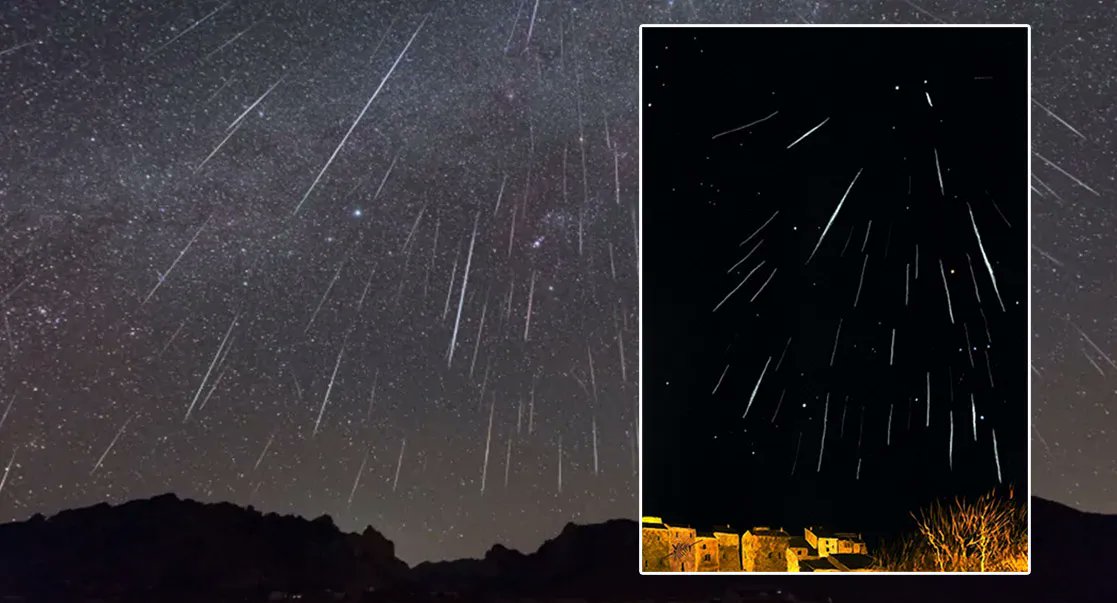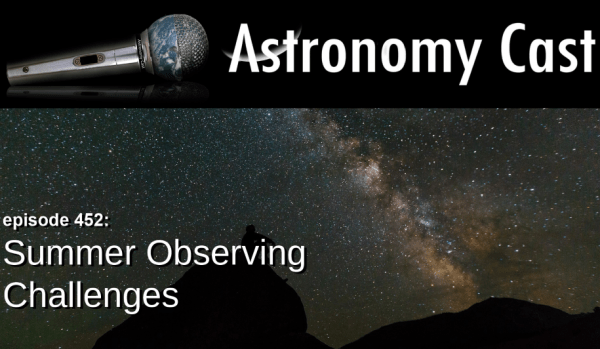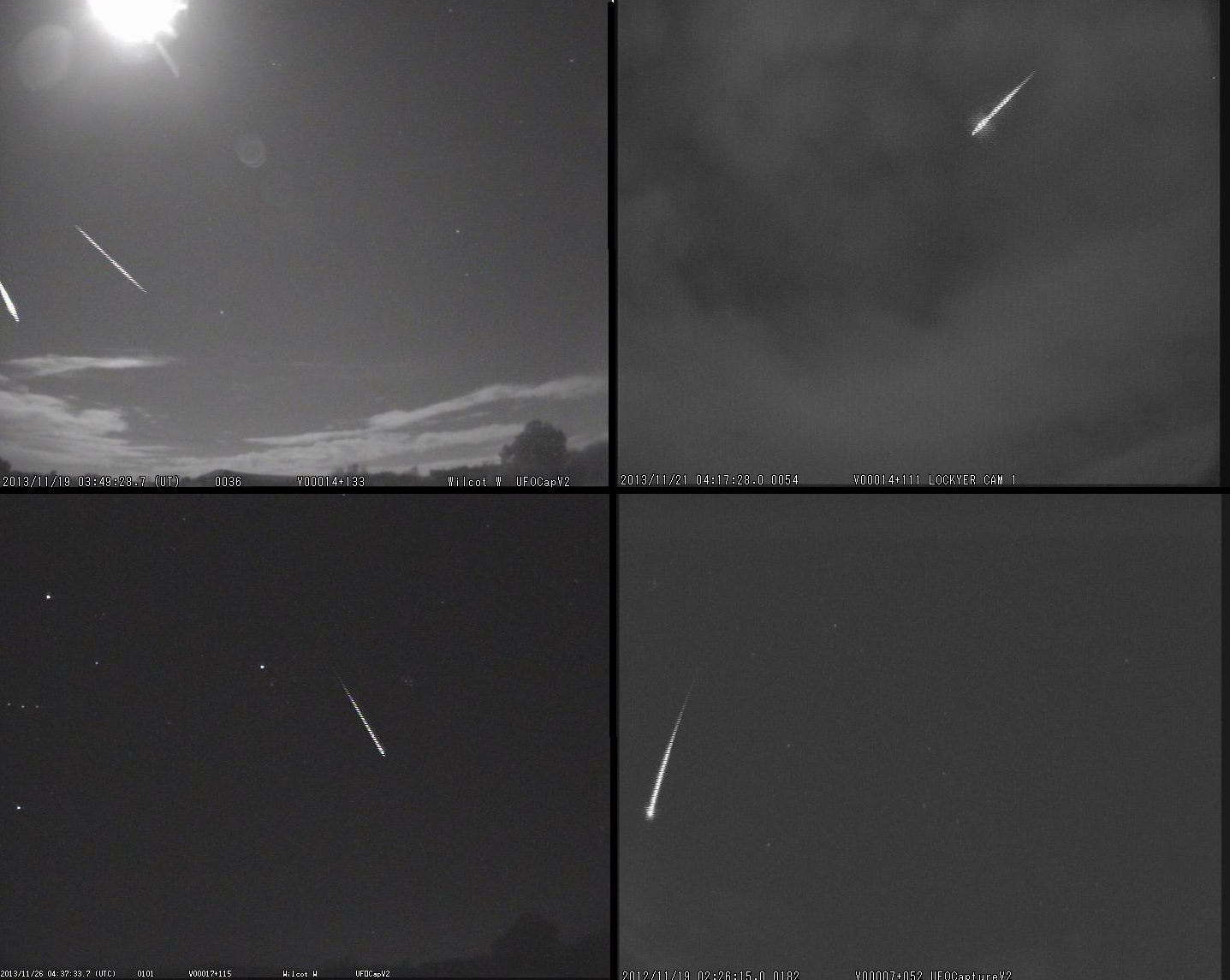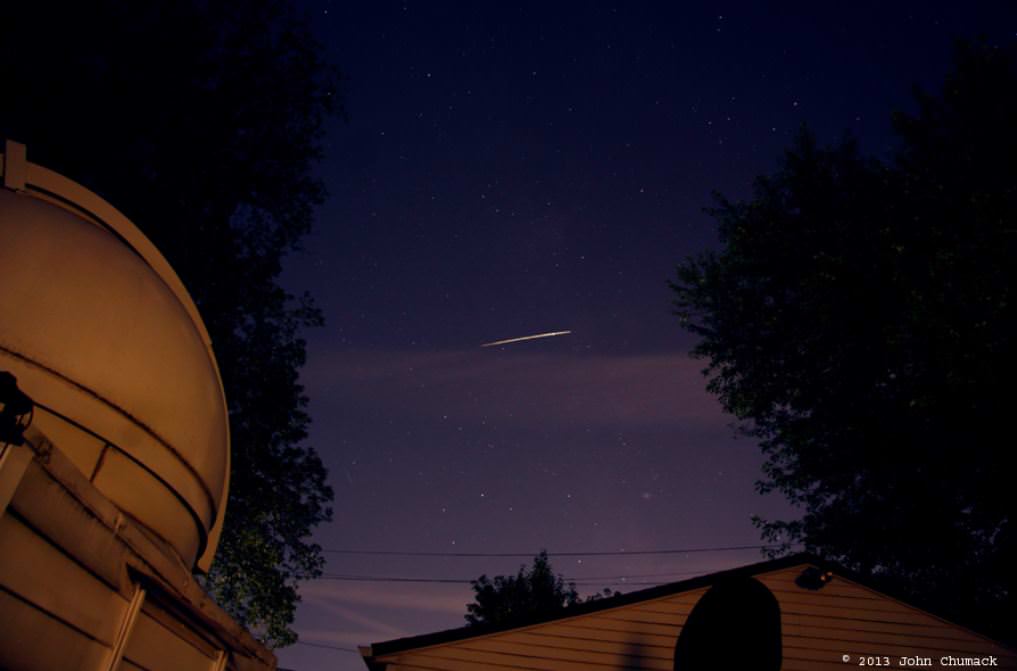Meteor showers are a great way to share a love of astronomy with those who might not be as familiar with it. Almost everyone loves watching streaks of light flash across the sky, but usually, it’s so intermittent that it can be frustrating to watch. That’s not the case for the next few weeks, though, as the annual Geminid meteor shower is underway until December 24th.
Continue reading “The Geminids Will be Peaking on December 14th. They’re Usually the Most Active Meteor Shower Every Year”Astronomy Cast Ep. 452: Summer Observing Challenges
Summer is almost here, and for the northern hemisphere, that means warm nights for observing. But what to observe? We’re here with a list of events and targets for you to enjoy over the summer. Get your calendars handy, and start organizing some events with your friends, and then get out there!
Visit the Astronomy Cast Page to subscribe to the audio podcast!
We usually record Astronomy Cast as a live Google+ Hangout on Air every Friday at 1:30 pm Pacific / 4:30 pm Eastern. You can watch here on Universe Today or from the Astronomy Cast Google+ page.
Explody Eta Aquarid Meteor Caught in the Act
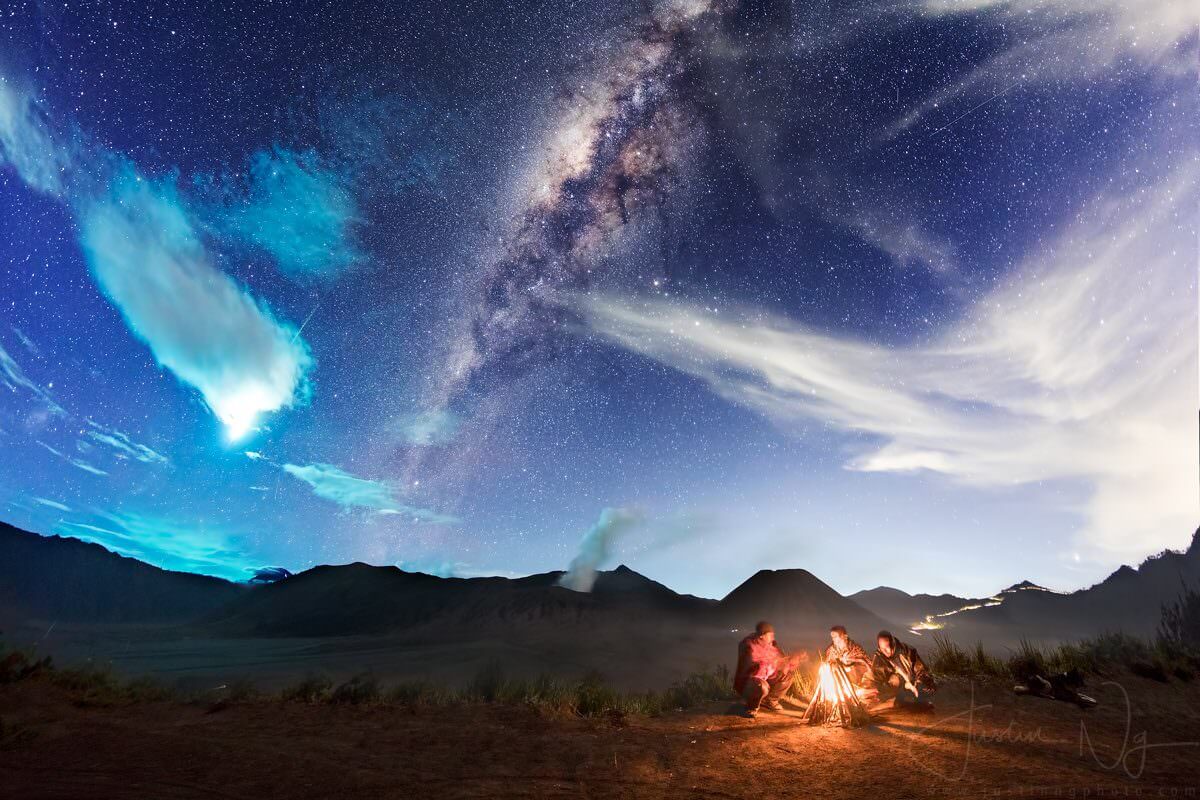
An Eta Aquarid meteor captured on video by astrophotographer Justin Ng shows an amazing explodingred meteor and what is known as a persistent train — what remains of a meteor fireball in the upper atmosphere as winds twist and swirl the expanding debris.
The meteor pierced through the clouds and the vaporized “remains” of the fireball persisted for over 10 minutes, Justin said. It lasts just a few seconds in the time-lapse.
Here’s the video:
Justin took this footage during an astrophotography tour to Mount Bromo in Indonesia, where he saw several Eta Aquarid meteors. The red, explody meteor occurred at around 4:16 am,local time. The Small Magellanic Cloud is also visible just above the horizon on the left.
Eta Aquarid meteor piercing through cloud and left behind a red smoke trail that lasted for over 10mins. Taken in Mt. Bromo 8hrs ago. pic.twitter.com/WtFl9TGRbj
— Justin Ng (@justinngphoto) May 6, 2017
Persistent trains occur when a meteoroid blasts through the air, ionizes gases in our atmosphere. Until recently, these have been difficult to study because they are rather elusive. But lately, with the widespread availability of ultra-fast lenses and highly sensitive cameras, capturing these trains is becoming more common, much to the delight of astrophotography fans!
Mount Bromo, 2,329 meters (7600 ft.) high is an active volcano in East Java, Indonesia.
Check out more of Justin’s work at his website, on Twitter, Facebook or G+.
6 May 2017 – Eta Aquarid Captured at Mount Bromo (4K Timelapse) from Justin Ng Photo on Vimeo.
‘Explody’ Taurid Meteors Produce Persistent Trains
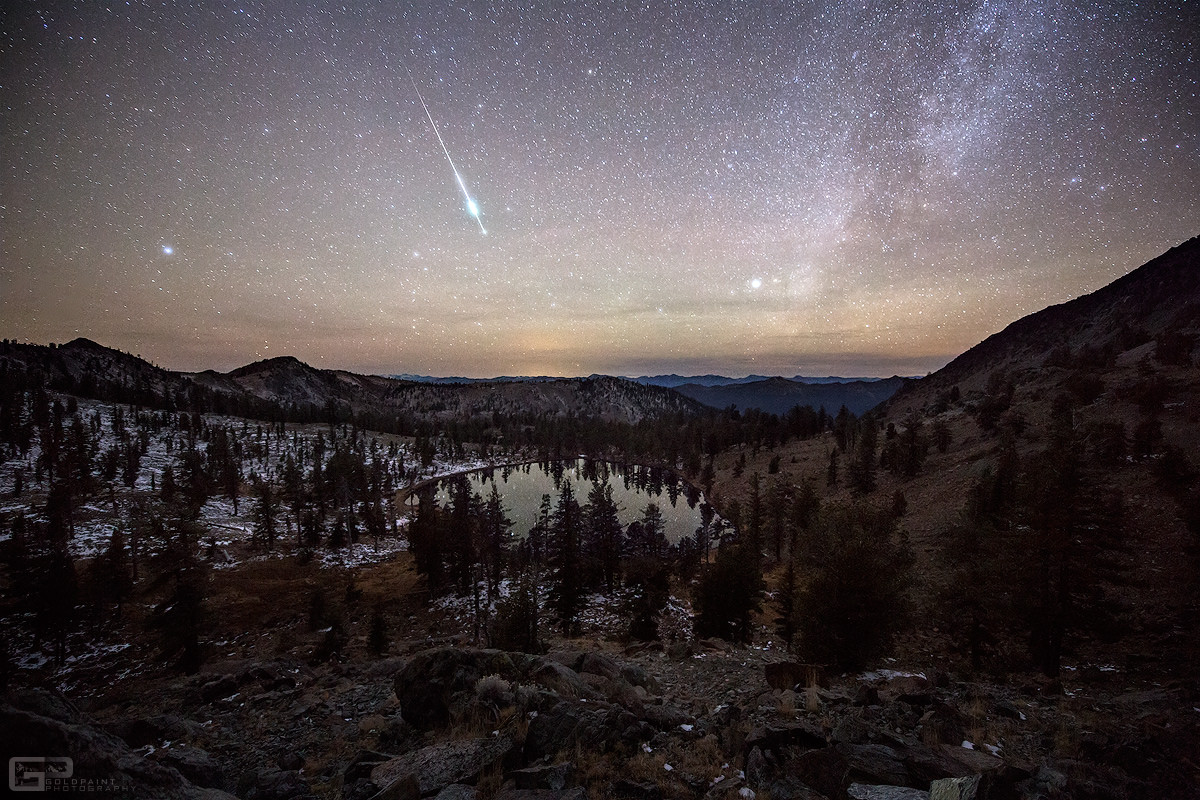
“The landscape was just at the verge of trying to silently explode with vibrant colors of red, gold and oranges,” said photographer Brad Goldpaint as he described the autumn view during his hike to Deadfall Basin in California to set up his cameras to try and capture a few Taurid meteors.
But the landscape wasn’t the only thing about to explode.
Later that night Brad captured a few “exploding” meteors that produced what are called persistent trains: what remains of a meteor fireball in the upper atmosphere as winds twist and swirl the expanding debris.
Brad created a time-lapse video from the event and slowed down the footage to highlight the trains.
Persistent trains have been difficult to study because they are rather elusive. But lately, with the widespread availability of ultra-fast lenses and highly sensitive cameras, capturing these trains is becoming more common.
Phil Plait still has the best description out there of what happens when persistent trains are produced:
As a meteoroid (the actual solid chunk of material) blasts through the air, it ionizes the gases, stripping electrons from their parent atoms. As the electrons slowly recombine with the atoms, they emit light — this is how neon signs glow, as well as giant star-forming nebulae in space. The upper-level winds blowing that high (upwards of 100 km/60 miles) create the twisting, fantastic shapes in the train.
The consensus among our Universe Today Flickr pool photographers who posted images of the Taurids this year is that the 2015 Taurids weren’t entirely remarkable. Most astrophotgraphers reported they saw one or two per hour. Here are a few more Taurid meteor shower images from our photographer friends:
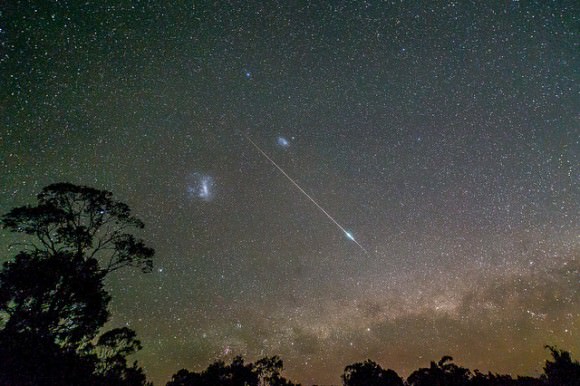
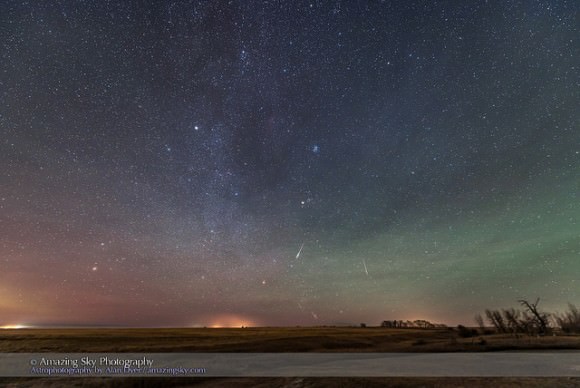
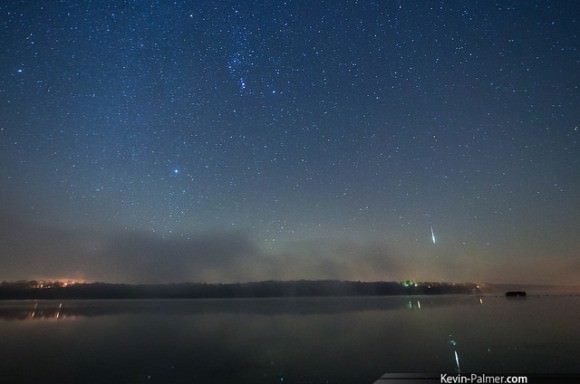
Midway Between Storms: Our Guide to the 2014 Leonid Meteors
If there’s one meteor shower that has the potential to bring on a storm of epic proportions, it’s the Leonids. Peaking once every 33 years, these fast movers hail from the Comet 55P Temple-Tuttle, and radiate from the Sickle, or backwards “question mark” asterism in the constellation Leo. And although 2014 is an “off year” in terms of storm prospects, it’s always worth taking heed these chilly November mornings as we await the lion’s roar once again.
The prospects: 2014 sees the expected peak of the Leonids arriving around 22:00 Universal Time (UT) which is 5:00 PM EST. Locally speaking, a majority of meteor showers tend to peak in the early AM hours past midnight, as the observer’s location turns forward facing into the oncoming meteor stream. Think of driving in an early November snowstorm, with the car being the Earth and the flakes of snow as the oncoming meteors. And if you’ve (been fortunate enough?) to have never seen snow, remember that it’s the front windshield of the car going down the highway that catches all of the bugs!
This all means that in 2014, the Asian Far East will have an optimal viewing situation for the Leonids, though observers worldwide should still be vigilant. Of course, meteor showers never read online prognostications such as these, and often tend to arrive early or late. The Leonids also have a broad range of activity spanning November 6th through November 30th.

The predicted ideal Zenithal Hourly Rate for 2014 stands at about 15, which is well above the typical background sporadic rate, but lower than most years. Expect the actual sky position of the radiant and light pollution to lower this hourly number significantly. And speaking of light pollution, the Moon is a 21% illuminated waning crescent on the morning of November 17th, rising at around 2:00 AM local in the adjacent constellation of Virgo.
The Leonids can, once every 33 years, produce a storm of magnificent proportions. The history of Leonid observation may even extend back as far as 902 A.D., which was recorded in Arab annals as the “Year of the Stars.”
But it was the morning of November 13th, 1833 that really gained notoriety for the Leonids, and really kicked the study of meteor showers into high gear.
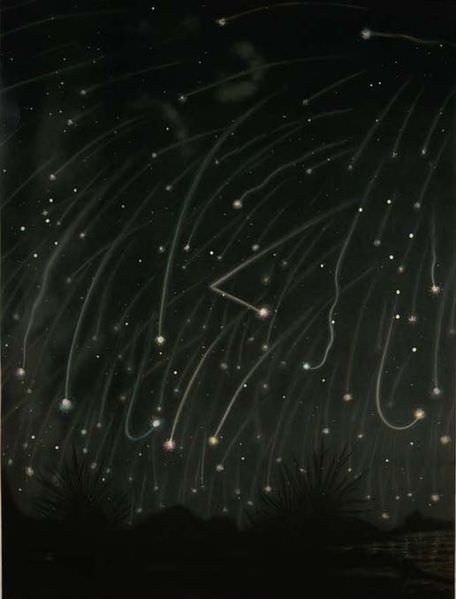
The night was clear over the U.S. Eastern Seaboard, and frightened townsfolk were awakened to moving shadows on bedroom walls. Fire was the first thing on most people’s minds, but they were instead confronted with a stunning and terrifying sight: a sky seeming to rain stars in every direction. Churches quickly filled up, as folks reckoned the Day of Judgment had come. The 1833 Leonid storm actually made later historical lists as one of the 100 great events in the United States for the 19th century. The storm has also been cited as single-handedly contributing to the religious fundamentalist revivals of the 1830s. Poet Walt Whitman witnessed the 1833 storm, and the song The Stars Fell on Alabama by Frank Perkins was inspired by the event as well.
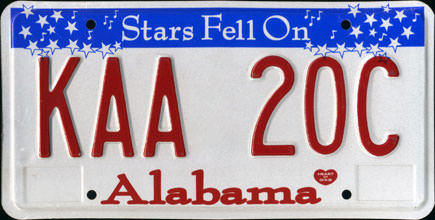
But not all were fearful. Astronomer Denison Olmsted was inspired to study the radiants and paths of meteor streams after the 1833 storm, and founded modern meteor science. The Leonids continued to produce storms at 33 year intervals, and there are still many observers that recall the spectacle that the Leonids produced over the southwestern U.S. back 1966, with a zenithal hourly rate topping an estimated 144,000 per hour!
We also have a personal fondness for this shower, as we were fortunate enough to witness the Leonids from the dark desert skies of Kuwait back in 1998. We estimated the shower approached a ZHR of about 900 towards sunrise, as a fireballs seemed to light up the desert once every few seconds.

The Leonids have subsided in recent years, and have fallen back below enhanced rates since 2002. Here’s the most recent ZHR levels as per the International Meteor Organization:
2009: ZHR=80.
2010: ZHR=32.
2011: ZHR=22.
2012: ZHR=48.
Note: 2013 the shower was, for the most part, washed out by the Full Moon.
But this year is also special for another reason.
Note that the 2014-2015 season marks the approximate halfway mark to an expected Leonid outburst around 2032. Comet 55P Tempel-Tuttle reaches perihelion on May 20th, 2031, and if activity in the late 1990s was any indication, we expect the Leonids to start picking up again around 2030 onward.

Observing meteors is as simple as laying back and looking up. Be sure to stay warm, and trace the trail of any suspect meteor back to the Sickle to identify it as a Leonid. The Leonid meteors have one of the fastest approach velocities of any meteor stream at 71 kilometres per second, making for quick, fleeting passages in the pre-dawn sky. Brighter bolides may leave lingering smoke trails, and we like to keep a set of binoculars handy to examine these on occasion.
Looking to do some real science? You can document how many meteors you see per hour from your location and send this in to the International Meteor Organization, which tabulates and uses these volunteer counts to characterize a given meteor stream.
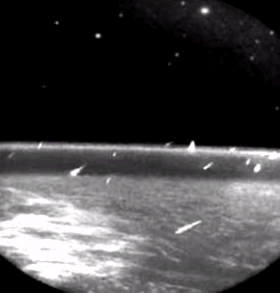
And taking images of Leonid meteors is as simple as setting your DSLR camera on a tripod and taking long exposure images of the night sky. Be sure to use the widest field of view possible, and aim the camera about 45 degrees away from the radiant to nab meteors in profile. We generally shoot 30 second to 3 minute exposures in series, and don’t be afraid to experiment with manual F-stop/ISO combinations to get the settings just right for the local sky conditions. And be sure to carefully review those shots on the “big screen” afterwards… nearly every meteor we’ve caught in an image has turned up this way.
Don’t miss the 2014 Leonids. Hey, we’re half way to the start of the 2030 “storm years!”
More Camelopardalids: Persistent Trains and that Satellite Fuel Dump Cloud
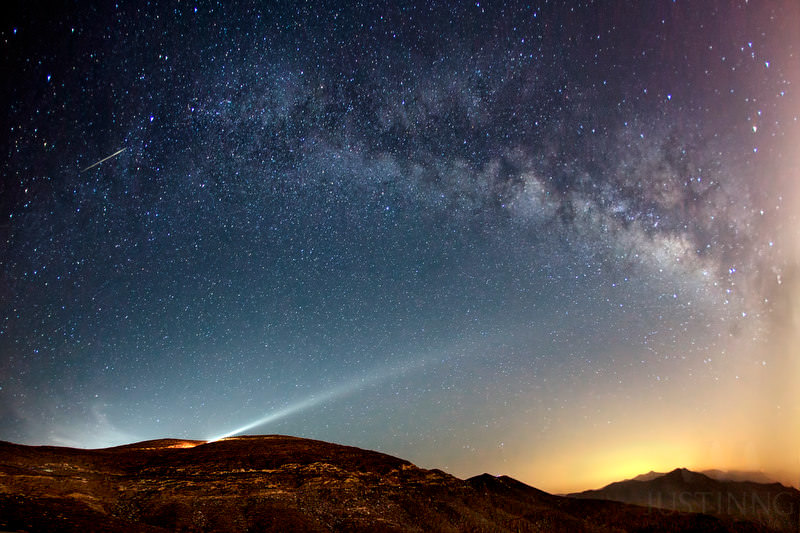
The first ever Camelopardalids Meteor Shower ended up being more of a drizzle than a shower, said astrophotographer John Chumack. “The new shower had very few meteors per hour, I estimated about 8 to 12 per hour, most were faint, but it did produce a few bright ones, as seen captured by my Meteor Video Camera network at my backyard observatory in Dayton Ohio.”
The above image is by Justin Ng who went to Jebel Al Jais mountain near Dubai to capture the meteor shower.
As our own Bob King reported the morning after — with several images and apt descriptions of the shower — the peak activity seem to occur around 2:00am to 4:00am EST (0700 to 900 UT).
There was a lot of buzz about a weird gigantic persistent train that occurred early on (about 1 am EST) and it ended up being a cameo appearance by the Advanced Land Observation Satellite a new Japanese mapping satellite, and a fuel dump from a booster stage of the satellite’s launch vehicle. Read more about it at Bob’s article, and see some images of it below.
Also, see a great video capture of a persistent train, shot by astrophotographer Gavin Heffernan:
We’ve had some more images come in via email and on our Flickr page
Persistent trains are the vaporized remains of the tiny meteoroid. The dust is blown around by upper level winds in Earth’s atmosphere.
Here’s a great time-lapse of the plume from the fuel dump. Astrophotographer Alan Dyer called it a “strange glow of light that moved across the northern sky… What I thought was an odd curtain of slow-moving, colourless aurora — and I’ve seen those before — has many people who also saw it suspecting it was a glow from a fuel dump from an orbiting satellite.
This short time-lapse of 22 frames covers about 22 minutes starting at 11:59 pm MDT on May 23 Each frame is a 60-second exposure taken at 2 second intervals, played back at one frame per second.
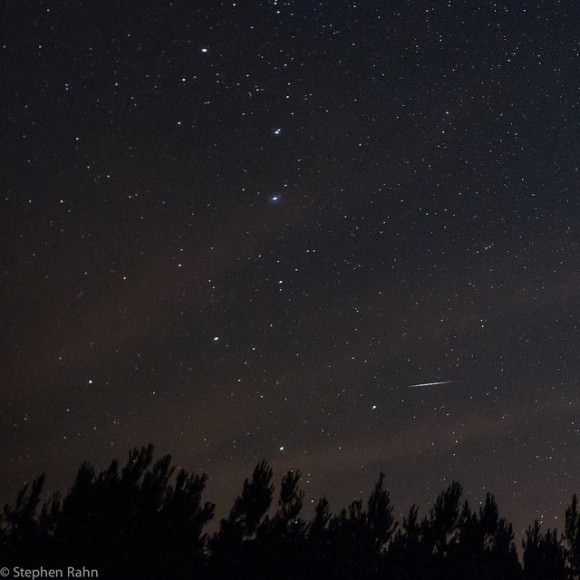
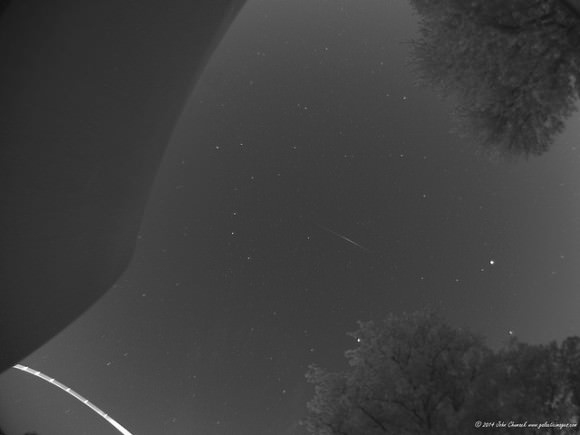
Here’s a video compilation put together by John Chumack:
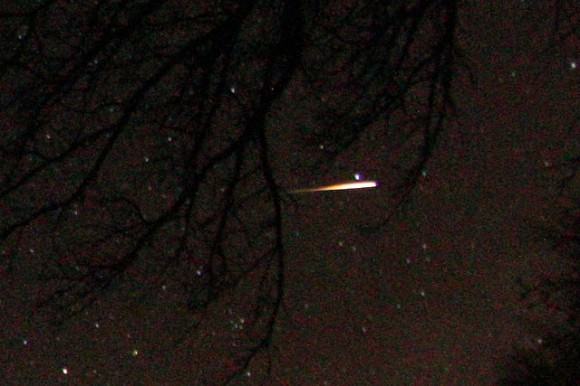
Camelopardalids meteor shower. Credit and copyright: DaretheHair on Flickr.

We’ll add more images as they come in!
Want to get your astrophoto featured on Universe Today? Join our Flickr group or send us your images by email (this means you’re giving us permission to post them). Please explain what’s in the picture, when you took it, the equipment you used, etc.
Astrophotos: Views of the Delta Aquarid Meteor Shower
Did those of you in the northern hemisphere have a chance to look for the Delta Aquarid meteors? Ever-faithful astronomer and astrophotographer John Chumack captured this view overnight from his observatory near Dayton, Ohio. Can you see the two meteors in this frame?
Below is another shot from John taken on July 29 using his Meteor Video Camera Network, and he captured about half a dozen bright ones, including one meteor through the clouds.
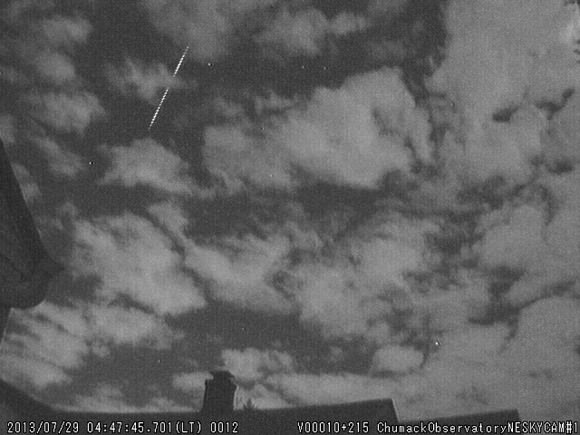
As our own David Dickenson said in his recent “how to” post on observing the Delta Aquarids, this meteor shower “can serve as a great “dry run” for the Perseids in a few weeks. You don’t need any specialized gear, simply find a dark site, block the Moon behind a building or hill, and watch.”
And as far as photographing them, David says that technique is “similar to doing long exposures of star trails.”
Simply aim your tripod mounted DSLR camera at a section of sky and take a series of time exposures about 1-3 minutes long to reveal meteor streaks. Images of Delta Aquarids seem elusive, almost to the point of being mythical. An internet search turns up more blurry pictures of guys in ape suits purporting to be Bigfoot than Delta Aquarid images… perhaps we can document the “legendary Delta Aquarids” this year?
Watch for the Delta Aquarid Meteors This Weekend
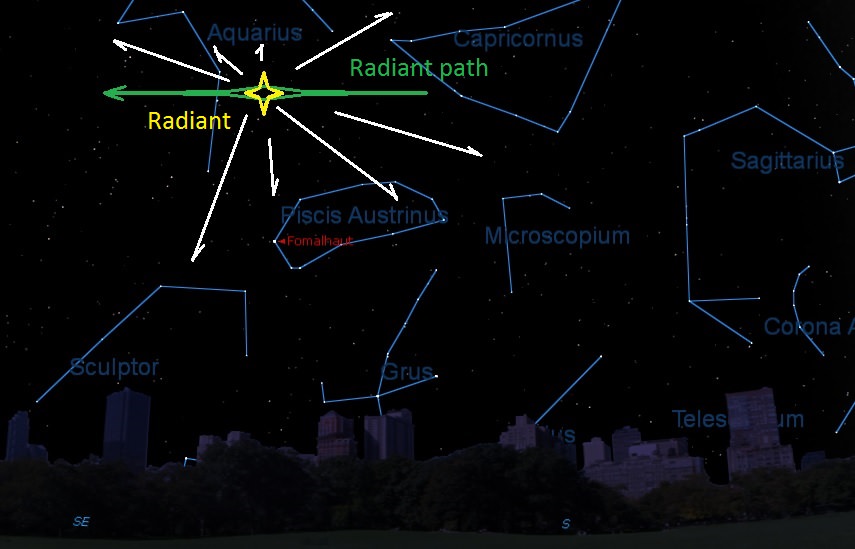
The meteor shower drought ends this weekend.
The northern summer hemisphere meteor season is almost upon us. In a few weeks’ time, the Perseids — the “Old Faithful” of meteor showers — will be gracing night skies worldwide.
But the Perseids have an “opening act”- a meteor shower optimized for southern hemisphere skies known as the Delta Aquarids.
This year offers a mixed bag for this shower. The Delta Aquarids are expected to peak on July 30th and we should start seeing some action from this shower starting this weekend.
The Moon, however, also reaches Last Quarter phase the day before the expected peak of the Delta Aquarids this year on July 29th at 1:43PM EDT/17:43 Universal Time (UT). This will diminish the visibility of all but the brightest meteors in the early morning hours of July 30th.
A cluster of meteor shower radiants also lies nearby. The Eta Aquarids emanate from a point near the asterism known as the “Water Jar” in the constellation Aquarius around May 5th. Another nearby but weaker shower known as the Alpha Capricornids are also currently active, with a zenithal hourly rate (ZHR) approaching the average hourly sporadic rate of 5. And speaking of which, the antihelion point, another source of sporadic meteors, is nearby in late July as well in eastern Capricornus.
The Delta Aquarids are caused by remnants of Comet 96P/Machholz colliding with Earth’s atmosphere. The short period comet was only discovered in 1986 by amateur astronomer Donald Machholz. Prior to this, the source of the Delta Aquarids was a mystery.
The Delta Aquarids have a moderate atmospheric entry velocity (for a meteor shower, that is) around an average of 41 kilometres a second. They also have one of the lowest r values of a major shower at 3.2, meaning that they produce a disproportionately higher number of fainter meteors, although occasional brighter fireballs are also associated with this shower.
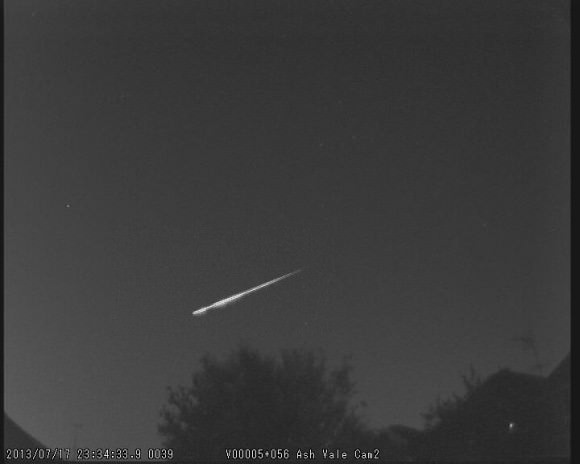
The Delta Aquarids are also one the very few showers with a southern hemisphere radiant. It’s somewhat of a mystery as to why meteor showers seem to favor the northern hemisphere. Of the 18 major annual meteor showers, only four occur below the ecliptic plane and three (the Alpha Capricornids, and the Eta and Delta Aquarids) approach the Earth from south of the equator. A statistical fluke, or just the product of the current epoch?
In fact, the Delta Aquarids have the most southern radiant of any major shower, with a radiant located just north of the bright star Fomalhaut in the constellation Piscis Austrinus near Right Ascension 339 degrees and Declination -17 degrees. Researchers have even broken this shower down into two distinct northern and southern radiants, although it’s the southern radiant that is the more active during the July season.
Together, this loose grouping of meteor shower radiants in the vicinity is known as the Aquarid-Capricornid complex. The Delta Aquarids are active from July 14th to August 18th, and unlike most showers, have a very broad peak. This is why you’ll see sites often quote the maximum for the shower at anywhere from July 28th to the 31st. In fact, you may just catch a stray Delta Aquarid while on vigil for the Perseids in a few weeks!
The shower was first identified by astronomer G.L. Tupman, who plotted 65 meteors associated with the stream in 1870. Observations of the Delta Aquarids were an off-and-on affair throughout the early 20th century, with many charts erroneously listing them as the “Beta Piscids”. The separate northern and southern radiants weren’t even untangled until 1950. The advent of radio astronomy made more refined observations of the Delta Aquarids possible. In 1949, Canadian astronomer D.W.R. McKinley based out of Ottawa, Canada identified both streams and pinned down the 41 km per second velocity that’s still quoted for the shower today.
Further radio studies of the shower were carried out at Jodrell Bank in the early 1950’s, and the shower gave strong returns in the early 1970’s for southern hemisphere observers even with the Moon above the horizon, with ZHRs approaching 40. The best return for the Southern Delta Aquarids in recent times is listed by the International Meteor Organization as a ZHR of about 40 on the morning of July 28th, 2009.
A study of the Delta Aquarids in 1963 by Fred Whipple and S.E. Hamid reveal striking similarities between the Delta Aquarids and the January Quadrantids & daytime Arietid stream active in June. They note that the orbital parameters of the streams were similar about 1,400 years ago, and the paths are thought to have diverged due to perturbations from the planet Jupiter.
Observing the Delta Aquarids can serve as a great “dry run” for the Perseids in a few weeks. You don’t need any specialized gear, simply find a dark site, block the Moon behind a building or hill, and watch.
Photographing meteors is similar to doing long exposures of star trails. Simply aim your tripod mounted DSLR camera at a section of sky and take a series of time exposures about 1-3 minutes long to reveal meteor streaks. Images of Delta Aquarids seem elusive, almost to the point of being mythical. An internet search turns up more blurry pictures of guys in ape suits purporting to be Bigfoot than Delta Aquarid images… perhaps we can document the “legendary Delta Aquarids” this year?
– Read more of the fascinating history of the Delta Aquarids here.
– Seen a meteor? Be sure to tweet it to #Meteorwatch.
– The IMO wants your meteor counts and observations!
Observing Alert: Rare Meteor Shower May ‘Outburst’ on June 11

Back on June 11, 1930 three members of the American Meteor Society (AMS) in Maryland saw a half-hour-long bright outburst of meteors from the little constellation Delphinus the Dolphin. No one had predicted the shower, but it came out of nowhere and hasn’t been seen since. Attempts to catch a repeat performance in subsequent years met with no success.
That may change tomorrow morning, June 11, 2013. Peter Jenniskins, research scientist with the SETI Institute and NASA Ames Research Center, has examined dust outbursts from long-period comets and suggests the Gamma Delphinids may return for a brief moment of splendor, as Earth passes through this stream of cometary debris not seen since 1930.
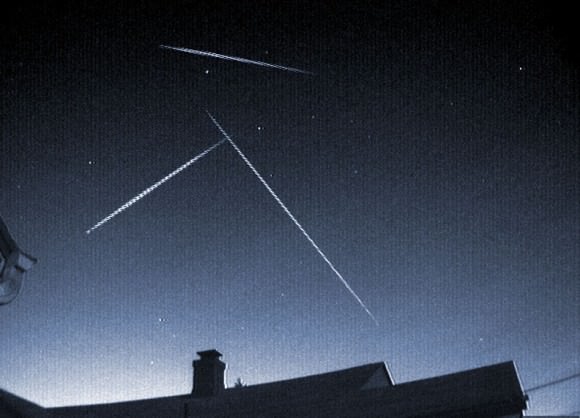
The expected time of maximum activity is 4:30 a.m. Eastern Daylight Time, 3:30 a.m. Central, 2:30 a.m. Mountain and 1:30 a.m. Pacific. These times are ideal for the Americas where Delphinus is high in southern sky at the peak time. Robert Lunsford of the AMS recommends starting your Gamma Delphinid vigil 2 hours ahead of time in case the shower’s early. If these meteors really do happen, you’ll see them anywhere in the sky, but they’ll all trace back to a point near the star Gamma Delphini in the dolphin’s nose.
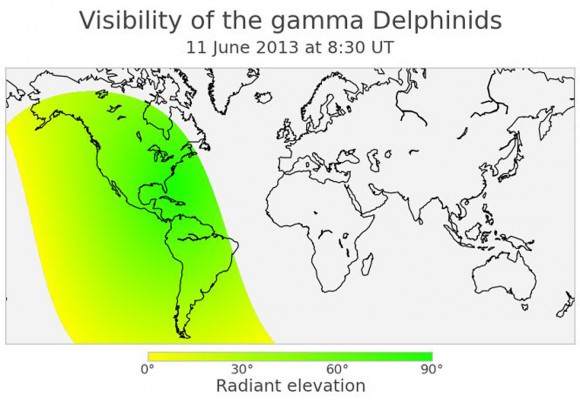
No one knows how strong the shower might be or even the duration though it’s likely to be brief. Time estimate range from one hour to 15 minutes. Lunsford expects bright meteors to appear a minute or two apart. If you’re game, split the difference and set up in a comfy lawn chair facing south an hour before the expected maximum. Should you see any of these rare dolphin tears, consider e-mailing a report to: [email protected]
Tonight June 10-11 from 10 p.m. – 2 a.m. CDT, Dr. Bill Cooke of NASA’s Meteoroid Environment Office will take your questions via live web chat. He’ll offer viewing tips about the shower and include a live Ustream telescope view of the skies over Huntsville, Ala.
If you shoot video or images and want to help improve our understanding of this elusive meteor shower, you can upload them to the Office’s Flickr group and also to Universe Today’s Flickr group. We’ll post images if this meteor shower proves to show up!
June Arietids – The Invisible Meteor Shower You Just Might See

I’ve never seen an Arietid meteor and chances are you haven’t either. Peaking on June 7-8, the Arietid (AIR-ee-uh-tid) meteor shower is one of the strongest of the year with a maximum rate of 50-80 per hour. But there’s a rub. The shower radiant, the point in the sky from which the meteors appear to radiate, is near the sun and best seen during daylight hours. When was the last time you saw meteors in daylight?
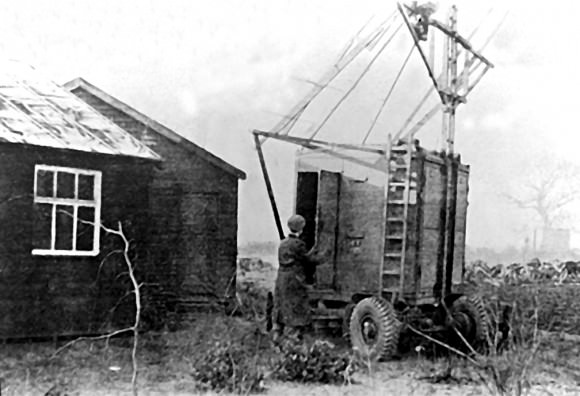
If you’re wondering how anyone could discover a meteor shower when the sun is out, it’s impossible unless your eyes can see radio waves. The Arietids were first “seen” in 1947 by operators of radio equipment at Jodrell Bank Observatory in England. Meteors leave trails of ionized gases when they rip through our upper atmosphere at tens of thousands of miles per hour and briefly make ideal reflectors of radio waves.
You can even hear them yourself by tuning to a “blank” spot between stations on an FM radio and listening for sudden bursts of talk or music when the meteor trail boosts a neighboring station into audibility. Click HERE for simple instructions if you’d like to give it a try.
The Arietids are joined by a second daytime shower at the same time by the Zeta Perseids, a smaller shower, to guarantee a couple busy days of meteor-listening — and potential meteor-watching — on and around June 7-8. Most meteor showers are tied to a particular comet, since they’re swarms of dusty detritus left behind in a comet’s wake as it travels ’round the sun. When Earth intersects the stream, tiny comet bits slam into the atmosphere, heat up to 3,000 F or more and self-immolate in glowing streaks we call meteors. Occasionally a shower’s parent can be an asteroid as in the case of the January Quadrantid meteor shower. It’s suspected that the asteroid 2003 EH1 may be a extinct comet.
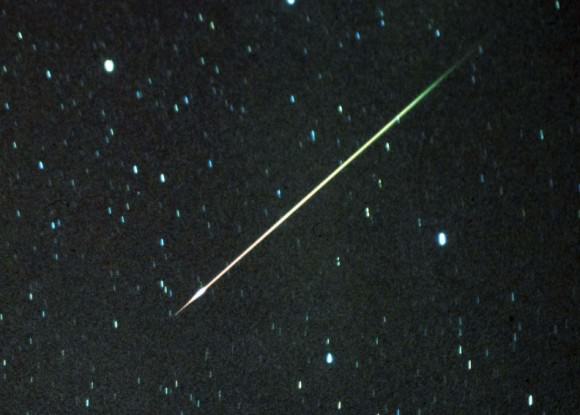
No one’s certain of the Arietids’ parentage. Likely candidates include the near-Earth asteroid 1566 Icarus and Comet 96P/Machholz, both of which have orbits that resemble the shower’s.
After ignoring May’s Eta Aquarid meteor shower for years because of its very low radiant at dawn, I was pleasantly surprised by the many meteors I saw when I happened to catch the shower at maximum on May 6 this year. Circumstances are only slightly worse for the Arietids. That’s why I think it’s worth your while to check out this shower tomorrow (Friday) and Saturday morning(June 7-8). Face east and start watching an hour or two before the start of dawn and continue your vigil until the sky brightens in the east.
The lesser Zeta Perseids are also active, adding to the fun. Since the two shower radiants are close to each other in the sky, it may be hard to tell which you’re seeing. No matter. Any fiery streaks you can trace back toward the east-northeast horizon will likely be one or the other.
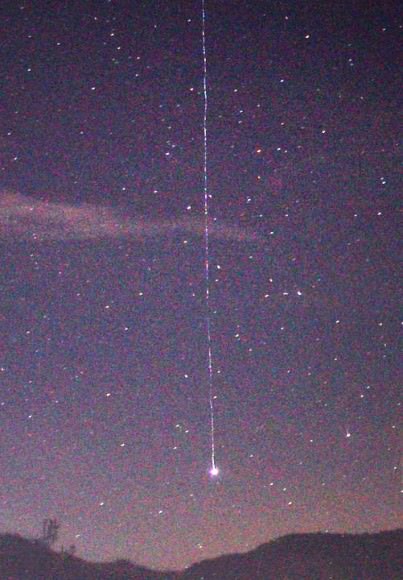
Whenever a radiant is near the horizon, many of the meteors approaching us do so at a very shallow angle almost horizontal to the Earth’s atmosphere. From our perspective they travel slowly and last a much longer time than do meteors striking the air at a steeper angle, typical for radiants that are higher in the sky.
Astronomers use the poetic “Earth-grazers” to describe them. Having seen a handful of these unique beauties during the May Aquarid shower, I’m hungry for more. Since the Arietids / Zeta Perseids also originate low in the sky, we should expect similar sights Friday and Saturday mornings.

